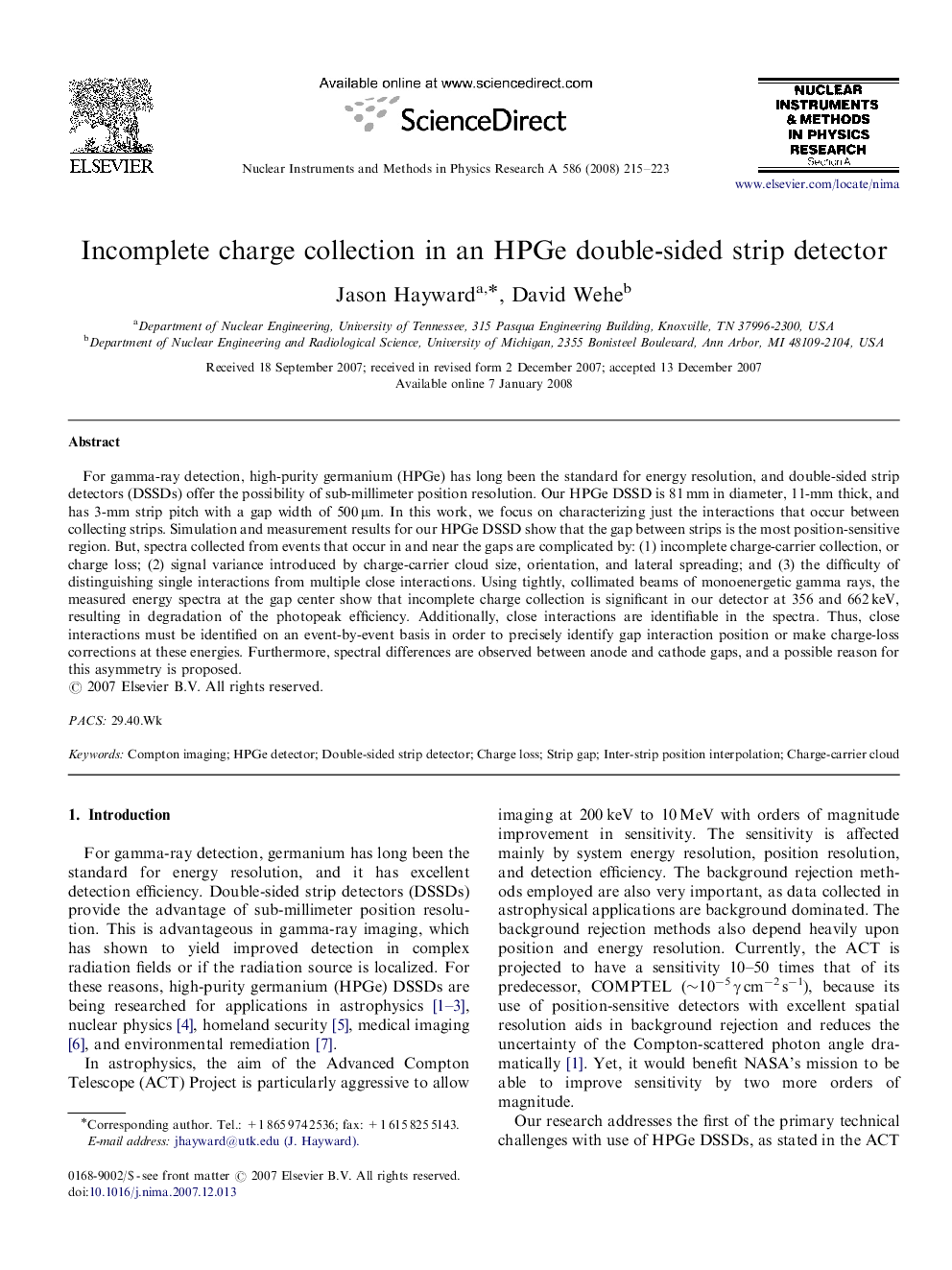| Article ID | Journal | Published Year | Pages | File Type |
|---|---|---|---|---|
| 1829949 | Nuclear Instruments and Methods in Physics Research Section A: Accelerators, Spectrometers, Detectors and Associated Equipment | 2008 | 9 Pages |
For gamma-ray detection, high-purity germanium (HPGe) has long been the standard for energy resolution, and double-sided strip detectors (DSSDs) offer the possibility of sub-millimeter position resolution. Our HPGe DSSD is 81 mm in diameter, 11-mm thick, and has 3-mm strip pitch with a gap width of 500 μm. In this work, we focus on characterizing just the interactions that occur between collecting strips. Simulation and measurement results for our HPGe DSSD show that the gap between strips is the most position-sensitive region. But, spectra collected from events that occur in and near the gaps are complicated by: (1) incomplete charge-carrier collection, or charge loss; (2) signal variance introduced by charge-carrier cloud size, orientation, and lateral spreading; and (3) the difficulty of distinguishing single interactions from multiple close interactions. Using tightly, collimated beams of monoenergetic gamma rays, the measured energy spectra at the gap center show that incomplete charge collection is significant in our detector at 356 and 662 keV, resulting in degradation of the photopeak efficiency. Additionally, close interactions are identifiable in the spectra. Thus, close interactions must be identified on an event-by-event basis in order to precisely identify gap interaction position or make charge-loss corrections at these energies. Furthermore, spectral differences are observed between anode and cathode gaps, and a possible reason for this asymmetry is proposed.
